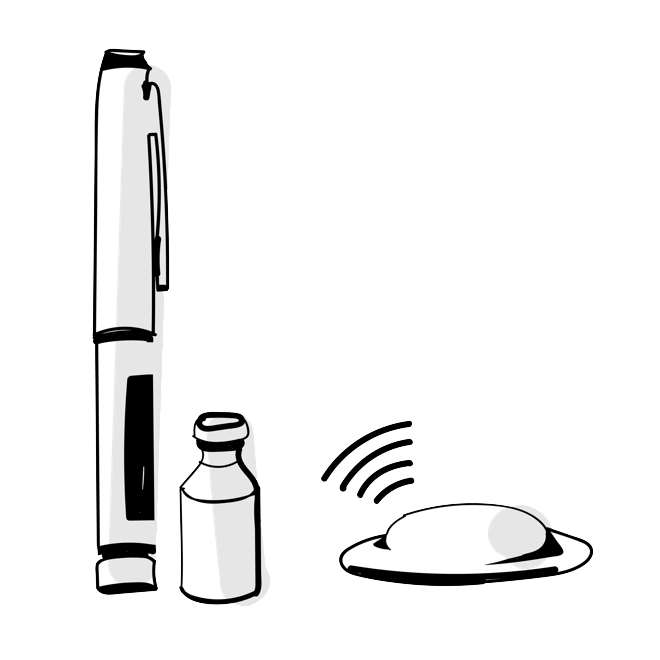Want your numbers at a glance with less pricking? Wearing sensor lets you do just that. You can easily see if your blood sugar is trending up or down, and on some models, get alerts if your blood sugar goes too high or too low. Injections are the most basic way of getting your insulin.
Wisdom from others using a Sensor & Injections

I know that devices are getting better and I want to give myself every opportunity to live as long and healthy as possible.
Michael

It was kind of like a weight lifted off my shoulders because I didn’t have to worry about doing all that stuff anymore. I was able to just test my sugar, put in the carbs I'm eating, and that was it.
James

It gave me so much relief to know that all I had to do was wave that little monitor over the sensor and it would just tell me what my sugars were.
Rosemary
Routine
After 48 years I still hate taking shots. There is still a micro-moment of anxiety before I inject. But, I prefer that to having the pump hanging off me with that tubing.
Julie, 50
Long and short acting injections. Still gotta do 'em.
Costs
Doctors know how great a tool the cgm is so they are always ready to help work with insurance companies and the manufacturer.
Lolly, 30
Insurance
Dealing with insurance is tough, but you can do it! Check out our How To Get It Guide to get the basics straight and understand what youll need to get approved.
Pros
Fewer Finger Pricks
Sensors check your blood sugar every few minutes. You only need to prick your finger one to two times per day to calibrate your sensor, or to verify questionable sensor readings.
Prevention
Prevent lows and highs before they happen. The CGM shows you which direction your blood sugar is headed and how fast. Some brands will alarm during the day or night, to let you know when you have a low or high blood sugar.
Balance Cost and Technology
The CGM makes a big difference in blood sugar control. Injections are the most affordable way to deliver insulin.
Cons
Alerts and Alarms
These can be overwhelming and sometimes unhelpful. You can silence or turn them off if you need a break.
Manual Effort
You still have to give injections throughout the day, and the CGM alone doesn't help you calculate doses based on carbs and blood sugar.




